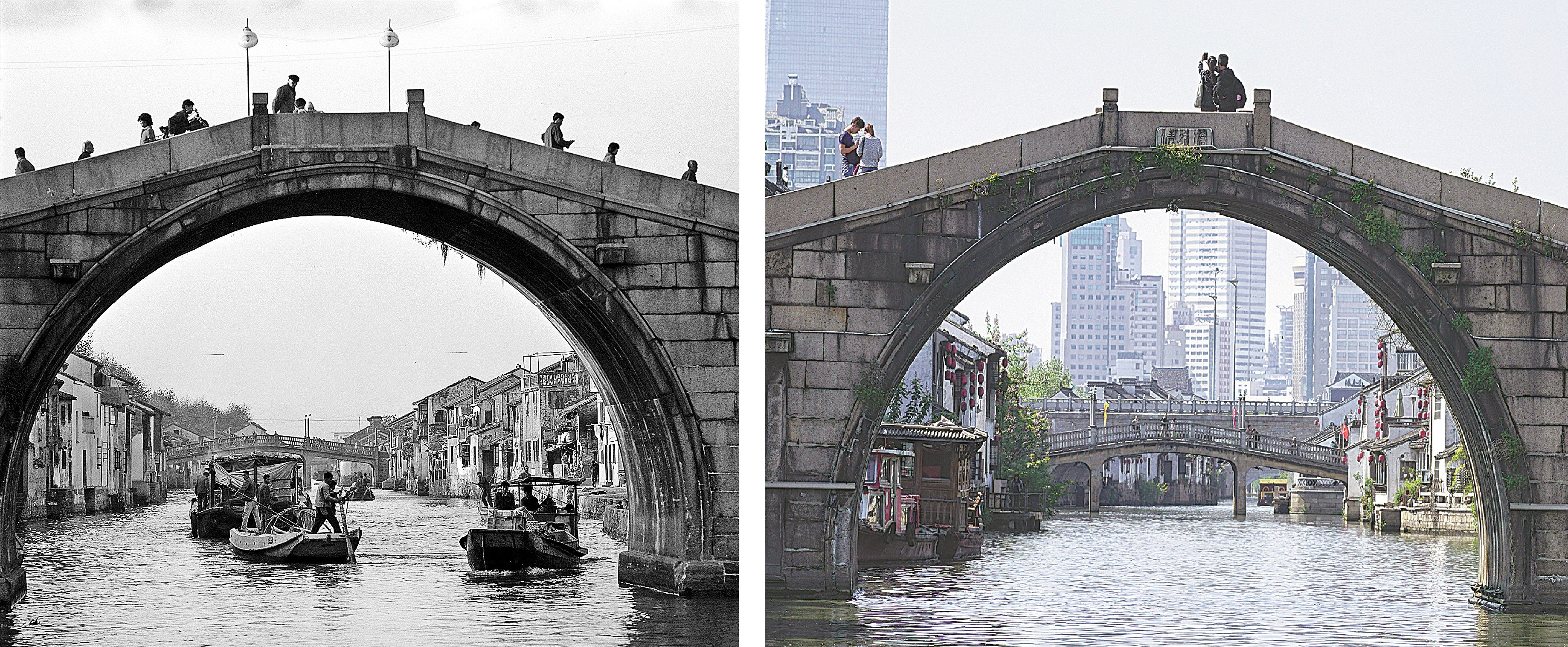The waterway in snapshots
THE ARTICLES ON THESE PAGES ARE PRODUCED BY CHINA DAILY, WHICH TAKES SOLE RESPONSIBILITY FOR THE CONTENTS

The Grand Canal is a flowing epic of transformation. The artificial waterway runs from north to south across the vast eastern plains of China. Since its digging began in the 5th century BC, dynastic transitions have occurred, and it has provided eloquent testimony to landscape changes, offering an economic lifeline to people living on its banks.
Given its incredible age and sheer length, no one has seen the Grand Canal all through. However, some avid photographers have chronicled its existence, one frame at a time. Pieced together, these photographs, captured over several decades, are visual evidence of the canal’s past, for the future. As they say, pictures are a return ticket to a moment otherwise gone.
Cycling tours
In June 1981, the magazine photographer Liu Shizhao and journalist Shen Xingda set out on a Grand Canal reporting tour. They bade farewell to Tongzhou, the waterway’s north end in Beijing, and pedalled towards the south end in Hangzhou, Zhejiang province.
The duo halted in towns along the banks, took photographs and interviewed people. The remarkable journey, interrupted only by scorching summer heat and sub-zero winter temperatures, ended after two years, during which more than 3,000 pictures were taken and stories written to accompany them.
Serial reports about the water corridor were published in the Japanese edition of the People’s China magazine over the following two years.
Subjects for his camera were numerous, from fishers in boats, people at temple fairs, traders in mule and horse markets, street hawkers preparing deep-fried dough cakes and village children learning acrobatics, to bridges, wood and stone houses, monuments, towers and tombs.
In 2016 Liu, then 68, retraced the route they had taken 35 years ago. “I found that many places and customs along the canal had changed because people’s livelihood did not essentially depend on the waterway anymore.”
Liu is still organising the several thousand photographs taken during his two trips. He is digitising and labelling the significant ones and has agreed to donate these pictures to the Capital Museum in Beijing.
“I want the photos to aid historical research, evoke interest and prompt conservation of the canal culture,” he says.
Witness to change
Growing up by the canal in suburban Hangzhou, another photographer Zhong Liming, now 61, keenly observed the transformation of life and livelihood for half a century.
“I vividly remember taking a boat to visit my grandparents and relatives in nearby villages in the 1960s,” Zhong says. “The distinct smell of the water and the banks fringed with reeds are among my fond childhood memories. Back then my father used a boat to transport fertilisers and harvested rice. Nowadays very few farmers use boats.”
Zhong took up photography as a hobby in 2009, capturing rural life by the canal in Zhejiang and Jiangsu provinces, visiting families who still stay in barges and taking pictures of their lives on water.
Using his spare time over the past decade, Zhong has photographed cities and towns along ancient waterways in the Yangtze River Delta, including the Grand Canal. Now that he has retired from his regular job he plans to travel north and photograph more canal settlements. “I have tried my best to document people’s everyday lives for years. These photos mirror the passage of time. We will surely witness more changes along the waterway as the country develops.”
Bird’s-eye view
Ma Wenxiao first laid his eyes on the Grand Canal during an aerial photography assignment before the Olympic Games in Beijing in 2008. From a helicopter, Ma was documenting the city’s development along Chang’an Avenue. When he flew eastwards, the canal came into focus by a cluster of factories around the Beijing Dongfang Chemical Plant.
“Back then, the area was still highly polluted. But now it is a big park and the green lungs of Tongzhou district.”
As deputy editor-in-chief of the newspaper Capital Construction, Ma has dedicated himself to documenting changes in Beijing, particularly those in the capital’s subcentre of Tongzhou. The growing popularity of drone cameras in recent years has only made that job easier.
“A bird’s-eye view of the waterway is always more appealing,” he says.
Subscribe to Independent Premium to bookmark this article
Want to bookmark your favourite articles and stories to read or reference later? Start your Independent Premium subscription today.